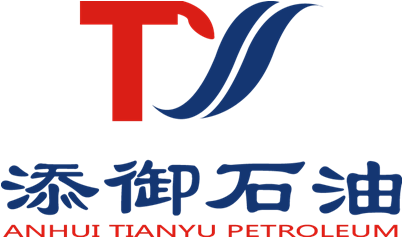
19
2025
-
05
Final Thoughts on High Pressure Ultra Wear-Resistant Acid Fracturing for Industry Professionals
Final Thoughts on High Pressure Ultra Wear-Resistant Acid Fracturing for Industry Professionals Understanding High Pressure Ultra Wear-Resistant Acid Fracturing High pressure ultra wear-resistant acid fracturing is a cutting-edge technique utilized in the oil and gas industry to enhance resource extraction. This method involves injecting a specially formulated acid solution into geological formati
Final Thoughts on High Pressure Ultra Wear-Resistant Acid Fracturing for Industry Professionals
Understanding High Pressure Ultra Wear-Resistant Acid Fracturing
High pressure ultra wear-resistant acid fracturing is a cutting-edge technique utilized in the oil and gas industry to enhance resource extraction. This method involves injecting a specially formulated acid solution into geological formations under high pressure, creating fractures in the rock and facilitating the flow of oil or gas. The term "wear-resistant" highlights the durability of equipment and materials used during the fracturing process, ensuring operational efficiency and reducing maintenance costs.
The Evolution of Acid Fracturing Techniques
Over the years, acid fracturing has evolved significantly. Originally, hydrochloric acid was the primary fluid employed, which was effective but had limitations, especially in terms of material wear and environmental impact. Recent advancements have led to the development of high-performance acid formulations that are both more effective and environmentally friendly.
Key Components of High Pressure Ultra Wear-Resistant Acid Fracturing
The following components are crucial in ensuring the success of high pressure ultra wear-resistant acid fracturing:
1. Specially Formulated Acids
Advanced acid formulations include organic acids and mixtures that enhance dissolution rates and minimize corrosion. These acids are engineered to withstand high pressures and temperatures while maintaining effectiveness in various geological conditions.
2. Quality Fracturing Fluids
The selection of fracturing fluids is vital to ensure that the fractures created in the rock formations remain open and conducive to fluid flow. These fluids must balance viscosity, proppant transport, and stability.
3. Advanced Proppants
Proppants are materials, often sand or ceramic, used to keep fractures open after the acid has been injected. Ultra-wear-resistant proppants are designed to withstand the harsh conditions of acid fracturing and provide long-lasting support for the fractures.
The Benefits of High Pressure Ultra Wear-Resistant Acid Fracturing
Implementing high pressure ultra wear-resistant acid fracturing techniques offers numerous benefits, including:
1. Enhanced Production Rates
By effectively creating and maintaining fractures in the geological formations, this technique significantly boosts production rates of oil and gas, allowing for more efficient resource extraction.
2. Reduced Equipment Wear and Tear
Utilizing wear-resistant materials minimizes the frequency of equipment repairs and replacements, resulting in lower operational costs.
3. Environmental Considerations
Modern formulations focus on reducing the environmental footprint of acid fracturing processes, making them more sustainable and socially responsible.
Challenges in Implementation
Despite the numerous advantages, several challenges exist in the implementation of high pressure ultra wear-resistant acid fracturing techniques:
1. Material Limitations
While advancements have been made, the materials used must still contend with the extreme conditions of high pressure and corrosive environments.
2. Regulatory Concerns
As environmental regulations continue to evolve, industry professionals must stay informed and compliant during the planning and execution of fracturing projects.
3. Cost Considerations
The initial investment in advanced materials and techniques can be substantial, requiring careful financial planning and justification.
Best Practices for Industry Professionals
To maximize the benefits of high pressure ultra wear-resistant acid fracturing, professionals in the industry should consider these best practices:
1. Continuous Training
Regular training and development programs for engineers and technicians ensure the entire team is equipped with the latest knowledge and techniques.
2. Collaboration with Material Scientists
Working closely with material scientists can lead to innovations in equipment and materials that enhance performance and reduce wear.
3. Rigorous Testing and Monitoring
Implementing thorough testing protocols and monitoring systems during the fracturing process can help identify potential issues before they escalate.
Future Trends in Acid Fracturing Technology
The future of high pressure ultra wear-resistant acid fracturing looks promising with ongoing research and development. Key trends include:
1. Smart Fracturing Technologies
Integration of smart technologies and IoT devices will lead to real-time monitoring and adjustments during the fracturing process.
2. Biodegradable Fracturing Fluids
The development of biodegradable acids and fluids can significantly reduce the environmental impact of fracturing operations.
3. Data-Driven Decision Making
The use of big data analytics will empower professionals to make informed decisions based on comprehensive data analysis throughout the fracturing process.
Frequently Asked Questions (FAQs)
1. What is the main purpose of high pressure ultra wear-resistant acid fracturing?
The primary purpose is to enhance oil and gas production by creating fractures in geological formations that facilitate resource flow.
2. How do advanced acids differ from traditional acids in fracturing?
Advanced acids offer improved performance, reduced corrosion, and environmental benefits compared to traditional hydrochloric acid.
3. What are proppants, and why are they important?
Proppants are materials that keep fractures open after the fracturing process, allowing for the sustained flow of oil and gas.
4. What challenges do professionals face in acid fracturing?
Challenges include material limitations, regulatory compliance, and the costs associated with advanced techniques.
5. How can industry professionals stay updated on trends in acid fracturing?
Professionals can stay informed through industry conferences, workshops, professional associations, and continuous education opportunities.
Conclusion
High pressure ultra wear-resistant acid fracturing represents a significant advancement in the oil and gas extraction industry. By leveraging modern materials, innovative techniques, and best practices, industry professionals can enhance production rates while minimizing environmental impacts. As the industry continues to evolve, staying informed and adaptable will be key to thriving in a competitive landscape. Embracing these advancements not only ensures operational efficiency but also contributes to a more sustainable future in resource extraction.
Contact Us
E-mail :
hldfhldf@188.com
Phone/Wechat:
+86-13339133258
Address:
19#, Zhihe Road, Economic & Technological Development Zone, Xuancheng, Anhui, China





